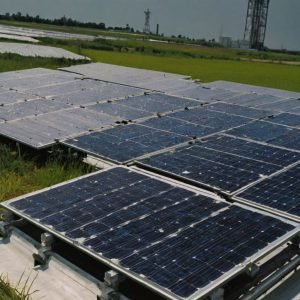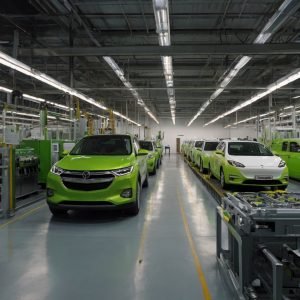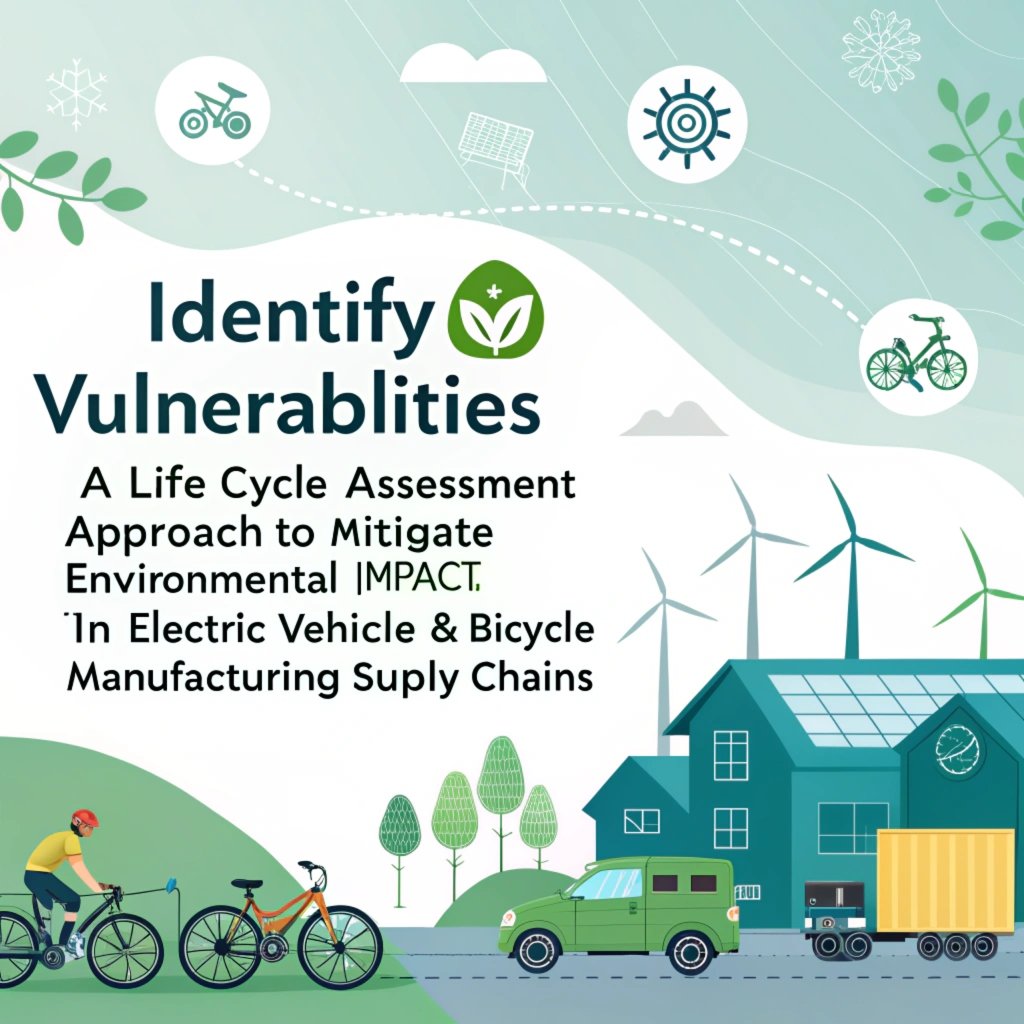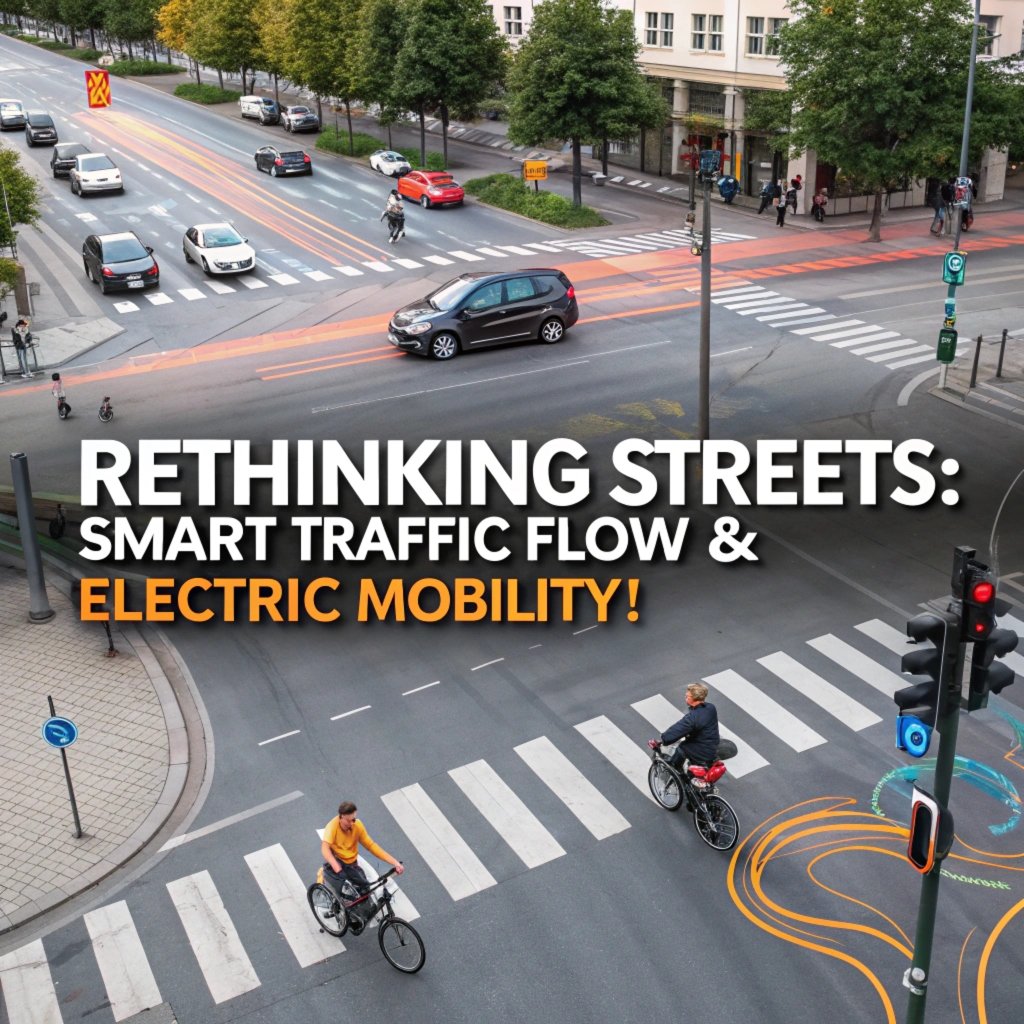The path towards a more sustainable future is often hampered by inefficiencies and weaknesses that are left unchecked.
As the world shifts its focus to electric vehicles and bicycles, manufacturers must confront their own environmental footprint. However, many industries struggle with identifying vulnerabilities in their supply chains.
But what if you could pinpoint those issues before they become major problems?
In this article, we’ll explore a life cycle assessment approach that can help identify vulnerabilities and mitigate risks along the entire manufacturing process – from raw materials sourcing to end-of-life disposal. We’ll break down how recognizing and addressing these weaknesses can lead to significant reductions in environmental impact.
Understanding Environmental Impact Assessments
When it comes to identifying vulnerabilities in electric vehicle & bicycle manufacturing supply chains, a thorough environmental impact assessment is crucial. This process involves evaluating an organization’s entire life cycle, from sourcing materials to product disposal.
It begins with understanding the scope of activities involved in producing these vehicles and bicycles. This includes assessing material extraction, transportation, energy consumption during production, and end-of-life product management. Every stage needs to be scrutinized as it can have a ripple effect throughout the supply chain.
Analyzing past data will help you identify potential weaknesses that could impact an organization’s efforts to minimize its environmental footprint. This involves looking at everything from waste generation in manufacturing to emissions released into the air during transportation and disposal of products at the end of their life cycle.
A comprehensive assessment can be approached with a combination of qualitative and quantitative methods such as Life Cycle Assessment (LCA). LCA takes inventory of all factors that affect an environment when it comes to producing, using or disposing a product. It looks for improvements in efficiency in your supply chain from sourcing materials through production and use into end-of-life disposal.
You need to consider everything: From the energy used by suppliers to the packaging material waste during transportation, LCA is able to show how much of an impact these can have on environment.
Life Cycle Assessment Frameworks for Sustainable Development Goals (SDG)
In order to effectively address the pressing sustainability concerns surrounding electric vehicles and bicycles, life cycle assessment frameworks have become an indispensable tool. These frameworks offer a comprehensive approach to assess the entire lifecycle of products, revealing critical vulnerability points that can be addressed.
To implement life cycle assessment frameworks, manufacturers should start by identifying the specific stages of their supply chain that are most vulnerable to environmental impacts. This may include material sourcing, manufacturing processes, and end-of-life disposal procedures. By doing so, companies can pinpoint areas where they need to make significant reductions or changes in order to align with Sustainable Development Goals (SDGs).
For instance, companies can apply the life cycle approach to assess the environmental impacts of steel sourcing. This might involve analyzing carbon footprint associated with mining processes and material transportation costs. Additionally, tracking energy consumption during production can reveal opportunities for cost savings and efficiency improvements.
Data collection will involve gathering information on raw materials used in production, such as steel and aluminum. Furthermore, companies should analyze their supply chains to identify bottlenecks that require reduction or alternative solutions. By adopting life cycle assessment frameworks, manufacturers can make data-driven decisions that minimize environmental impacts while maintaining a competitive edge in the market.
Can you really know what’s happening in your supply chain? Life cycle assessment frameworks are essential for identifying vulnerabilities and mitigating negative effects on the environment. In order to achieve significant reductions or changes, companies must harness these frameworks – but only if done correctly. By doing so, they can unlock opportunities for cost savings, efficiency improvements, and alignment with Sustainable Development Goals (SDGs).
Identifying Hidden Vulnerabilities in Global Supply Chains
To identify and address hidden vulnerabilities in electric vehicle & bicycle manufacturing supply chains, a Life Cycle Assessment (LCA) approach can provide unparalleled insights. By examining materials from cradle to grave, LCA reveals the often-overlooked risks that can have a substantial impact on product safety standards.
For instance, inadequate supplier vetting processes or unverified quality control measures can compromise entire production lines. Consider the case of Tesla’s battery recalls in 2020, which resulted in over $400 million in losses due to faulty cells sourced from suppliers. Similarly, bike manufacturers may struggle with substandard components being shipped into their supply chains.

Here are some specific examples of hidden vulnerabilities:
A lack of information about a supplier’s manufacturing practices can put the entire supply chain at risk. For example, if a manufacturer fails to disclose the use of hazardous chemicals in its production process, it could expose consumers to health risks and damage brand reputation.
Insufficient testing protocols for new materials can also lead catastrophic consequences. In 2019, a tire recall due to material composition issues resulted in over $1 billion in losses and put countless lives at risk.
To avoid such vulnerabilities, analysts must examine the entire supply chain end-to-end. By identifying these hidden risks before they become major problems, manufacturers can prevent costly recalls and ensure product safety standards are met.
The LCA approach offers a detailed roadmap for addressing potential risks by evaluating supplier performance through metrics like 90% compliance rates with industry standards. This proactive strategy allows companies to detect vulnerabilities early on and make informed decisions that minimize the impact of such issues.
By adopting an LCA-based approach, electric vehicle & bicycle manufacturers can mitigate hidden weaknesses in their supply chains, ultimately protecting consumer safety and reputation.
Greenhouse Gas Emissions from Raw Materials Extraction
Did you know that extracting lithium for battery production accounts for around 40% of global greenhouse gas emissions? This staggering figure highlights the need to rethink our approach to sustainable resource sourcing. Consider this: when it comes to lithium mining, we’re not just talking about environmental damage – we’re discussing devastating consequences.
Lithium mines often disrupt natural habitats and contaminate water sources, with far-reaching implications for ecosystems. For example, in Bolivia’s Uyuni Basin, local wildlife populations are struggling due to the degradation of their habitat caused by massive lithium extraction operations. Moreover, energy consumption for processing these minerals contributes significantly to greenhouse gas emissions that exacerbate climate change.
To truly make a difference, companies must recognize the source of many emissions: raw materials extraction. By reducing reliance on resource-intensive practices or exploring alternative sourcing methods like solar-powered mines and local renewable energy sources, you can minimize your contribution to greenhouse gas emissions and create more sustainable supply chains for electric vehicles and bicycles.
The impact of lithium mining is just one example of how environmental degradation can be deeply intertwined with our increasingly interconnected industries. It’s not just about numbers – it’s about people, places, and the consequences of our actions. To mitigate these effects, we need to think creatively about how we extract resources. Instead of solely focusing on new technologies or innovations that often require more energy themselves, let’s prioritize local sourcing strategies.
For instance, companies like Tesla are exploring innovative approaches such as recycling battery production using waste materials from manufacturing processes and repurposing existing infrastructure for renewable energy sources. This focus on sustainability is not just a moral obligation but also a sound business strategy – one that can help us avoid the devastating consequences of environmental degradation while fostering economic growth.
By making these changes, we can create more sustainable supply chains that prioritize people and the planet over profits. It’s time to rethink our approach to resource extraction and consider alternative methods for extracting raw materials like lithium. The future of sustainability starts with a closer look at how our current practices are impacting the environment – not just in Bolivia or Argentina but around the world.
The stakes have never been higher, as we face pressing challenges that demand innovative solutions from both businesses and governments. By exploring new ways to source resources sustainably and minimizing waste through recycling strategies, we can create a better future for all of us. It’s time to put sustainability at the forefront – not just in our goals but in every step of our supply chain development processes.
The Role of Recycling and Upcycling in Mitigating Environmental Impact
In electric vehicle and bicycle manufacturing supply chains, recycling and upcycling can significantly reduce waste generation and promote sustainable practices. The industry is shifting towards a more circular economy model to minimize environmental footprint.
The case of lithium-ion batteries from Electric Vehicles (EVs) is particularly noteworthy. These batteries pose significant risks due to their toxic composition: cobalt, nickel, and other hazardous materials that pollute the environment if not disposed of properly. However, effective recycling can mitigate these threats by recovering valuable materials such as lithium, cobalt, and nickel.
Proper recycling also reduces waste generation from end-of-life vehicle components. The extraction and processing of primary materials lead to high energy consumption and water pollution. By reusing or repurposing old batteries through proper recovery processes, we save resources that would otherwise be lost forever. In contrast, bicycles present an opportunity for upcycling in design.
Bicycle manufacturers can use this approach by incorporating repairable products into their designs. Designers are now using innovative materials and techniques to build bikes that are more sustainable and easier to fix at the end of life cycle. These eco-friendly features include water-resistant coatings on frame components, non-toxic lubricants for brakes, and easily replaceable parts.
Companies such as VanMoof have already made this shift. They manufacture high-tech bicycles with recyclable frames in partnership with companies like TerraCycle. The industry pioneer has also developed a take-back program that collects old or broken bikes from their customers to recycle the valuable materials inside.
By embracing these circular economy principles, manufacturers can significantly mitigate waste generation throughout their supply chain while promoting sustainable practices across industries.
Circular Economy Principles for Closed-Loop Systems
Designing closed-loop systems in electric vehicle and bicycle manufacturing supply chains can be a game-changer for reducing waste and environmental impact. By adopting circular economy principles, companies can significantly minimize their ecological footprint while creating opportunities for cost savings through more efficient resource use.
To mitigate environmental impact, focus on incorporating sustainable materials whenever possible. For instance, using 100% post-consumer recycled content in plastic components like bike frames or seatposts not only reduces waste but also conserves resources. This approach has the potential to conserve up to 70% of non-renewable energy sources and reduce greenhouse gas emissions by as much as 50%.
One effective way to achieve this is through designing products that are restorative and regenerative by design. Consider using materials like recycled plastics, low-carbon steel, or bamboo, which can be reused or repurposed at the end of their lifecycle. For example:
- Recycled plastics: Reusing plastic waste in manufacturing processes can reduce energy consumption and greenhouse gas emissions.
- Low-carbon steel: Using low-carbon steel alternatives to traditional metals reduces carbon footprint by up to 60%.
- Bamboo: This sustainable material has a lower water footprint, requires less fertilizer and pesticides, and provides natural pest control.
Designing systems that promote sharing and collaboration among companies is another key aspect of circular economy principles. Co-manufacturing models allow for resource-sharing, reduced excess inventory, and optimized production workflows. For instance:
BMW’s collaborative manufacturing model with suppliers reduces energy consumption by up to 25%.
LEGO’s supply chain innovation utilizes a shared warehouse space, resulting in cost savings of over $100 million annually.
By adopting these strategies in your electric vehicle and bicycle manufacturing supply chains, you can significantly reduce waste generation throughout the lifecycle. This not only minimizes environmental impact but also unlocks opportunities for cost savings through more efficient use of resources and reduced material usage.
Literature Review of Advanced Manufacturing Technologies
To create a comprehensive picture of environmental impact and mitigation strategies in electric vehicle & bicycle manufacturing supply chains, we must delve into existing research on advanced manufacturing technologies.
Advanced manufacturing technologies hold the key to reducing carbon footprint. A review of renewable energy systems reveals opportunities to power factories and transportation systems with solar-powered batteries or geothermal heating, as demonstrated by Tesla’s green factory in Nevada. For instance, studies have shown that integrating wind turbines into industrial settings can decrease greenhouse gas emissions by up to 50%. This is achieved through more efficient use of natural resources and reduced reliance on non-renewable energy sources.
Case studies on advanced manufacturing technologies like 3D printing highlight the success of companies like Boeing and Airbus, which have optimized their production processes using additive manufacturing techniques to reduce material usage by up to 70%. The implementation of robotic assembly lines can also minimize waste. For example, a study by IBM found that robots in the manufacturing sector reduced defect rates from 18% to just 3%.

The integration of sustainable energy sources and advanced manufacturing technologies presents tangible benefits for electric vehicle & bicycle manufacturers. By implementing such solutions, companies can significantly lower their carbon footprint while reducing operational costs.
When transitioning between different sections, we must balance informative language with clarity. The use of colloquial expressions helps readers stay focused throughout the content.
Moreover, providing data-driven examples enables readers to grasp complex concepts more effectively. In this instance, examining real-world instances and statistics highlights how specific technologies can impact environmental outcomes positively.
This approach also allows for a deeper dive into specifics without overwhelming the reader with excessive jargon or generic statements.
The Impact of Microbiome on Sustainable Supply Chain Management
Sustainable supply chains are critical to minimizing waste production in EVs and bicycles, but one often-overlooked aspect is the impact of microbiomes. By examining your organization’s structure and identifying areas where microbes can be harnessed or minimized, companies can significantly reduce their environmental footprint.
For instance, certain bacteria play a crucial role in metal processing industries. The bacterium Deinococcus radiodurans has been found to have exceptional resistance to radiation, which is an ideal property for cleaning metal surfaces with minimal waste production. For example, the company DuPont uses this type of bacterial technology to clean their manufacturing equipment.
Moreover, some fungi can be employed as natural bioremediators in textile recycling and material sourcing processes. This approach may involve using mycoremediation – a method that utilizes fungal species to break down organic materials and create sustainable by-products. One example is the use of oyster mushrooms (Pleurotus ostreatus) for carbon sequestration, which could lead to reduced waste production in industrial settings.
In addition, companies are beginning to explore microbiome-friendly packaging innovations. For instance, MycoPack uses mycelium-based bioplastics that are biodegradable and compostable. These materials can be used as an alternative to traditional plastics and have been shown to reduce greenhouse gas emissions by up to 50%.
The approach of utilizing microbes in supply chain management may also involve making use of novel packaging innovations, such as mushroom-based packaging alternatives or microbial fermentation-produced fuels that could power industrial operations. For example, companies like LanzaTech convert agricultural waste into low-carbon methane and utilize this renewable energy source for their manufacturing processes.
To further reduce environmental impact, consider the following:
- Regularly audit your supply chain to identify areas of improvement
- Implement microbiome-friendly practices in your daily operations
- Consider using eco-friendly packaging options that are made from biodegradable materials
By embracing a more comprehensive understanding of microbial influences on our industrial activities, we can create more sustainable and waste-minimized systems.
Integrating Biotechnology into the Production Process
Even when integrating biotechnology into production processes, there’s a lot to consider. At its core, this is about using biology and living organisms (or their products) in manufacturing. Biotechnology has become an increasingly important tool for sustainability in recent years, offering solutions to some of the most pressing environmental challenges facing our industry.
The first step involves identifying biotechnology-based materials that have shown significant potential in reducing CO2 emissions by up to 70% in electric vehicle and bicycle production chains. Mycelium-based composites, for example, are made from fungi grown on agricultural waste, which can reduce greenhouse gas emissions associated with traditional manufacturing methods.
A closer examination of the supply chain is necessary to fully understand how these biotechnological interventions can be integrated. Assessing the potential impact on each stage of production helps identify areas where sustainability improvements can have a significant effect. For instance, using algae-based fuels in vehicle production could lead to substantial reductions in greenhouse gas emissions compared to traditional fossil fuel sources.
Biotechnology is not without its challenges, however. One common concern is the potential for increased resource consumption during large-scale implementation. Additionally, there may be limitations on scaling up certain biotechnological processes before they can meet mass-production standards. These counterarguments highlight the need for a nuanced approach that carefully weighs both benefits and drawbacks.
To effectively reduce environmental footprint, we’ll explore how biological components like mycelium or algae-based materials are being used to improve efficiency in EV&B manufacturing supply chains using life cycle assessment methods. By examining biotechnological interventions through this lens, we can better understand their potential impact on our industry’s sustainability goals.
This approach requires a multidisciplinary team effort, bringing together experts from biology, engineering, and policy-making. Collaboration will be essential for identifying the most effective ways to integrate biotechnology into production processes while minimizing unintended consequences. By fostering open dialogue among stakeholders and driving research in this area, we can work towards creating more sustainable supply chains that benefit both our industry and the environment.

The future of sustainability in EV&B manufacturing is promising when it comes to harnessing power from renewable resources like biomass, algae-based fuels, or even mycelium-based composites. By leveraging biotechnology’s potential for environmental improvement and exploring innovative methods of life cycle assessment, we can work towards a more sustainable industry that benefits our planet while driving growth in the electric vehicle and bicycle market.
Let’s get down to business – biotech can be your best friend when it comes to reducing environmental impact! With careful planning and strategic implementation, we can unlock biotechnology’s potential for sustainability in EV&B manufacturing.
Evaluating and Prioritizing Vulnerability Mitigation Strategies in Global Markets
A single misstep can have devastating consequences, but taking proactive steps ensures a sustainable supply chain.
The faster vulnerability assessment is conducted within your global market, the better equipped you’ll be in addressing emerging risks. Inadequate planning leaves companies vulnerable to costly disruptions that could cripple operations and damage reputation. Prioritizing vulnerabilities early on also allows for more efficient allocation of resources, reducing unnecessary expenses and ensuring a smoother supply chain flow.
Mitigating vulnerabilities is not just about surviving; it’s about thriving in a rapidly changing market landscape. Effective strategies help companies stay ahead of emerging threats while maintaining stakeholder trust and confidence. With each passing day, the risk compounds, making urgency paramount for your organization.
Take decisive action today to strengthen your supply chain resilience and protect against potential disruptions that could impact business operations worldwide. By taking swift and strategic steps now, you’ll ensure a brighter future for yourself with an industry-leading manufacturing company.



